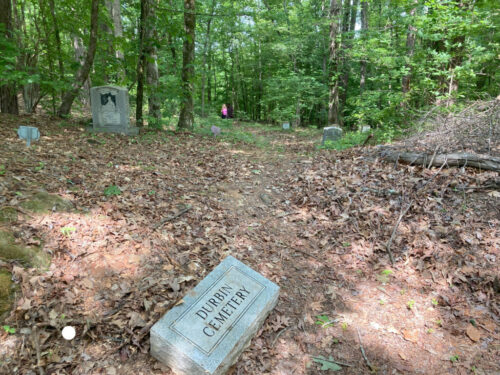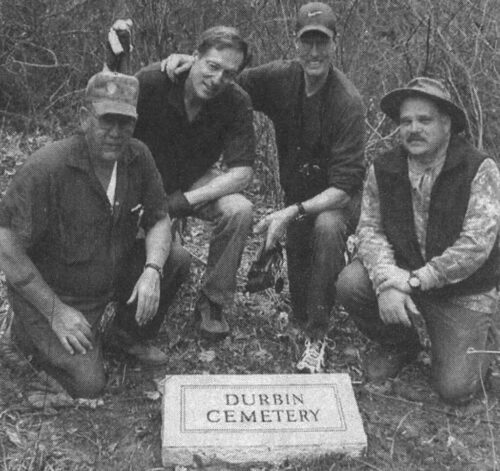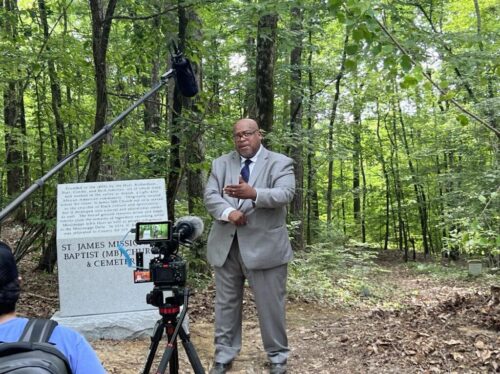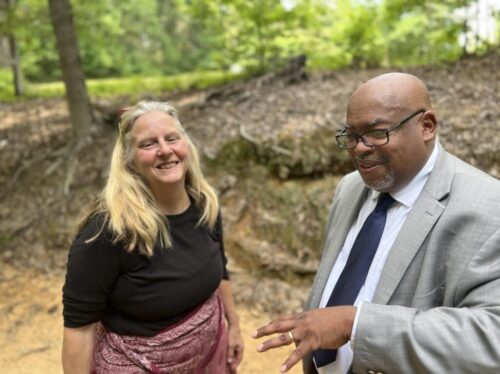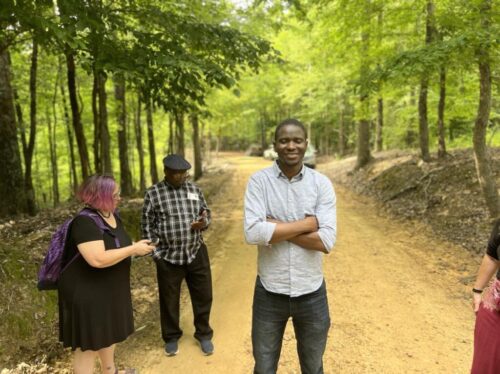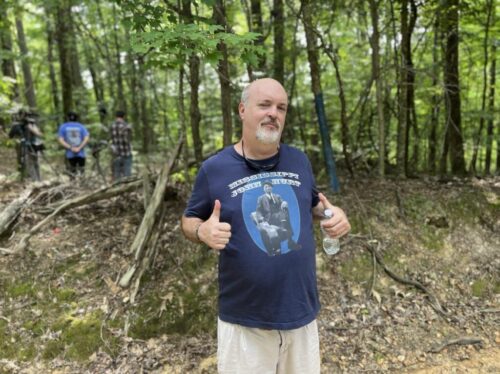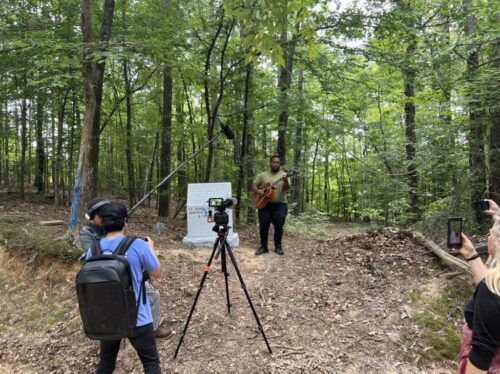Preserving the Legacy
of John Hurt
By Shannon Evans


For the last year I have worked closely with the Mary Frances Hurt and the Mississippi John Hurt Blues Foundation to help preserve and possibly reclaim land that belonged to the original site of the St. James Missionary Baptist Church in Teoc, Mississippi.
At one time, St. James Missionary Baptist Church sat high atop the loam hills that look down on the once heavily populated community of Avalon–the hamlet made famous in the tune “Avalon Blues” by Mississippi John Hurt. It was the site of a huge plantation community and filled with hundreds of Black sharecropper families, a company store, a gin, a post office and numerous warehouses for cotton bale storage. By 1920, the Yazoo and Mississippi Valley Railroad had built a spur line and a platform that stopped in Avalon.

Avalon Homecoming & Memorial Walk
The Official Dedication of the Historic Marker at St. James MB Church Cemetery
The Mississippi John Hurt Museum
County Road 109, Box 1972, Carrollton, Mississippi 38917
October 7 & 8, 2023
Starts at noon on Saturday

The church was the epicenter of the community. Every Sunday families left their cabins and marched up the steep hill to the shelter of the woods and creeping kudzu that provided the little shade available on hot, dusty summer days. At the top of the hill, up a winding dirt track road sat the rural church. Built in the early 1880s, it was more than just a place of worship. It was the community center, the social gathering spot, the schoolhouse for the formerly enslaved adults to learn to read and later their children’s school, and the place to bless the babies and bury the dead. For fifty years the community met weekly, if not daily on that hill in some capacity or other until a tornado came through in the 1930s and blew apart the building.
The parishioners, undaunted by the storm, gathered up every scrap of timber they could find from the storm’s damage and moved the church down in the valley closer to Avalon. They rebuilt the church under a stand of pecan trees along the edge of a cotton field. There the members met until 2012 before the “retired” church was sold to the Hurt Foundation, which moved the building to its current site on County Road 109.
But that is not the end of the story…


In that hallowed ground on the hill lies the remains of the church founders, the hardworking men and women of modest means who carved out a refuge in the hostile white world on the edge of the Delta. Their final resting places were often unmarked or planted with the simplest of markers, such as a wooden cross. Yet, their descendants could recall their exact burial locations on that hill. They cleaned up those graves and decorated them with flowers from their gardens or wildflowers from the woods. Even though the church was rebuilt a couple of miles away, it remained an important burial ground for African Americans in Avalon.
The hill on which the church once stood was not only a sacred space for the Black community, but also grew into an important site of social activity, where they gathered for picnics and paid respect to their ancestors–their mothers, fathers, and friends gone too soon. In one later recollection, one local even remembered finding a whiskey still on the hill. “We got about 27 gallons of whiskey…the still was in the woods not far from the old church, which had long since rotted down.” [The Greenwood (MS) Commonwealth, August 13, 2000]

Once the space around the church became too crowded, the community started to bury folks across the road and down the hillside. Conleys, Richardsons, Becks, Hurts, and every other family name from Avalon filled the graveyard. In the 1960s the families were now able to furnish simple headstones, often homemade from concrete poured in a form and carefully lettered by a sharp tool. In the lower cemetery, those headstones stand as a testament to the noble spirit of the people who once filled the valley below. It is the final resting place of Mississippi John Hurt and his sons T. C. and Johnny, his murdered daughter Ida Mae, and his older brother Hennis, who “was known to make hard liquor in the neighborhood of old St. James Church.”
Across the road in an unmarked grave are the remains of his mother Mary Jane McCain and the tiny grave of his first great grandchild tragically killed in infancy by a shotgun blast. The clear depressions of rows of gravesites dapple the knoll, a testimony to the people who once lived in Avalon.

Unfortunately, the Hurt, Conley, Richardson, and Beck families can no longer visit the graves on the hill; they can only visit those across the road. In 2012, the Carroll County Board of Supervisors agreed to grant the surrounding landowner the right to establish a new cemetery on the exact spot where the church once stood. Even though the Hurt family had petitioned the county to protect the site in 2012, the county recognized the rights of Charles Spain to the land instead. Though Mr. Spain had apparently made a tentative offer to turn over the small parcel of land to the Hurt family, he eventually decided to establish his own burial ground–the Spain Family Cemetery–on the site.
The result: Members of the Spain family are buried atop the graves of elders who founded the original St. James MB Church. Indeed, the photograph to the right shows Mary Frances Hurt kneeling beside a broken piece of a headstone in the ground at the foot of the grave of Charles Spain’s wife. He erected a double granite marker for his wife and himself. Spain Cemetery also contains headstones for two other members of the Spain family.


The Carroll County Board of Supervisors, which had voted unanimously to support the petition of landowner Charles Spain, advised the Hurt family to hire a lawyer and contest the decision, and the Mt. Zion Memorial Fund decided to help them conduct research at the Carroll County courthouse in Carrollton. Yet, it’s unusually difficult to conduct deed research in the courthouse, and some records seem to have mysteriously disappeared. We did find, however, evidence that one piece of land across the road once belonged to Hennis Hurt; the parcel is presently owned by Mary Frances Hurt.
We also found one deed indicating that Charles Spain purchased the property with the “exception of the cemetery.” One map from 2009 has been amended in tax records with one half of the cemetery (the church side) blacked out. Though Mary Frances and I requested earlier maps, the clerk in the tax assessors office informed us that none existed. Perhaps considering us “troublemakers,” we were then asked to leave the premises.
A few months later, I returned to the courthouse and located information showing that the Hurt Family had owned almost 80 acres for many years via a land grant that was held by Mary Jane McCain Hurt, the mother of Mississippi John Hurt. The acreage included the parcel on which the church originally sat.
The Hurt family has been soliciting legal assistance for several years–and they have received several hollow offers from blues enthusiasts that never materialized–but we believe that we have finally found someone willing to investigate the ownership of the property. His name is Alex Harvey, and he previously worked for the US Forest Service in Mississippi. We hope that his vast experience in heir property issues will prove the deciding factor in returning the burial ground to its rightful owners.



But while the Hurt Foundation continues to seek justice, the Mt. Zion Memorial Fund made it a priority to prevent further erasure of St. James MB Church Cemetery. The grave of Mississippi John Hurt is one of the most hallowed blues heritage sites in the state. Hundreds of blues enthusiasts visit the burial ground to pay their respects each year. They leave notes, guitar picks, whiskey bottles, flowers, and other items in front of his headstone. They post photographs on social media; they sit and play his music on guitars they have lugged from Iceland, the Netherlands, or Japan just to pay tribute to the finger-picking blues legend from Avalon.
In 2004, several members of the Durbin family mistakenly tried to lay claim to St. James MB Church Cemetery, and they installed a small granite marker at the opening to the path leading to John Hurt’s grave. The Durbin family had once lived in Carroll County, yet nowhere near Teoc or Avalon. None of their people were buried on that hillside. Yet, a group of four descendants held an impromptu ceremony at the site in 2004. According to county records, their family owned a small plantation about 5 miles away before they left and moved to East Texas. Their family burial site was at the end of County Road 109 in an area the county damned up to make a watershed pond. That land is now owned by a retired physician from Greenwood. For some reason, they chose to place their marker at the entrance to St. James Cemetery.
With the Durbin descendants having placed their incorrect marker and Charles Spain having established Spain Family Cemetery atop the original site of St. James MB Church & Cemetery, Mary Frances Hurt became increasingly concerned about encroachment on the remaining section of the cemetery, particularly the grave of her grandfather. Thus, she again reached out to the Mt. Zion Memorial Fund for assistance. This time, she wanted to erect a historical marker at the entrance to the burial ground–the place where she had asked the Mississippi Blues Commission to install the blues trail marker for her grandfather back in 2006. MZMF Executive Director DeWayne Moore decided to request funds for the marker from the American Historical Association, which provided grants to small historical organizations in the wake of the Covid-19 pandemic. The massive granite marker cost in upwards of $3,000, and the text was first written by Mary Frances Hurt. MZMF Vice President Shannon Evans and Executive Director DeWayne Moore subsequently edited the text and received approval from the Hurt Foundation before sending it off to Columbus Marble Works in Columbus, Mississippi.
The final text on the marker reads:
St. James Missionary Baptist (MB)
Church & Cemetery
Founded in the 1800s by the Hurt, Richardson,
Burt, Conley, and Beck families—all of whom
lived and worked in the valley at Avalon,
a tight-knit African American community.
Originally located across the street,
St. James MB Church not only served as the crucible
of Black culture and spirituality, but it developed
into a social and educational center as well.
The burial ground remains active and holds forever
close the remains of legendary recording artist
Mississippi John Hurt
as well as people indigenous to the Mississippi Delta.
In 2016, St. James MB Church was relocated to
County Rd. 109, Carrollton, MS.




Columbus Marble Works installed the marker under the supervision of Shannon Evans in early June 2023, but the original dedication event had to be postponed due to the unexpected medical emergency of Mary Frances Hurt. Since the American Historical Association grant closed on June 30, however, the MZMF went ahead with plans to install the marker on June 4. The MZMF’s Shannon Evans, DeWayne Moore, and Dr. Abdul Ajibola joined Dr. Brian Mitchell, of the Abraham Lincoln Presidential Library & Museum in Illinois; Dr. Augusta Palmer, chair of the Communication Studies Department at St, Francis College in New York; blues artist Jontavious Willis, of Greenville, Georgia; blues artist Little Joe Ayers, of Holly Springs, Mississippi; and Mike Condon of Memphis, Tennessee.
On October 7th at noon, the Mississippi John Hurt Blues Foundation and the Mt. Zion Memorial Fund invite everyone to drive out to the Avalon Homecoming & Memorial Walk, which will start at the MS John Hurt Museum and conclude with the official unveiling of the marker.
Avalon Homecoming & Memorial Walk
The Mississippi John Hurt Museum
County Road 109, Box 1972, Carrollton, Mississippi 38917
October 7 & 8, 2023
Starts at noon on Saturday

